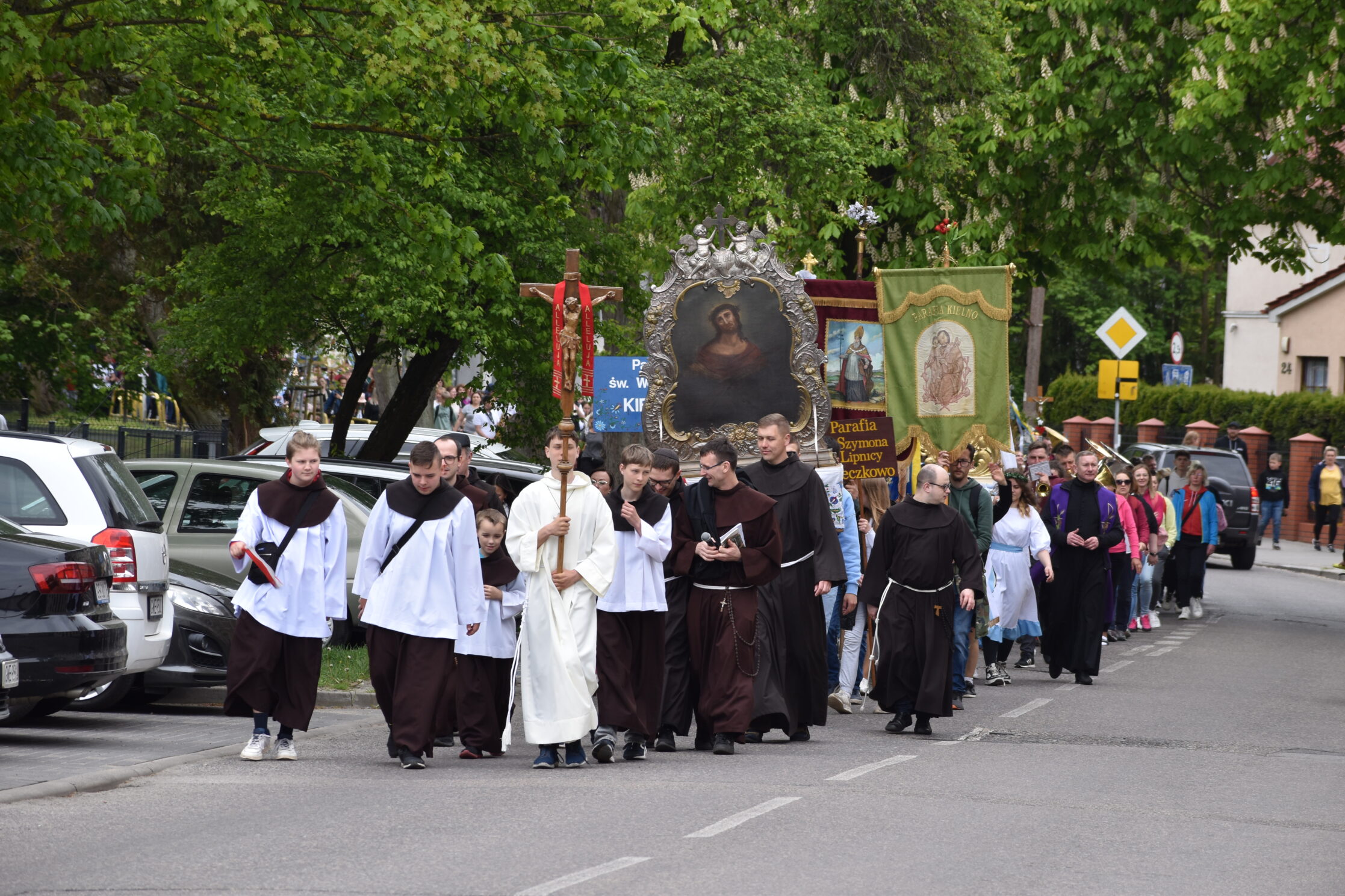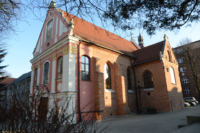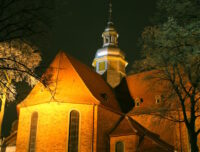More than 300 years of tradition
As Gaudenty Alfons Kustusz, the researcher, established, the main Calvary celebrations in Wejherowo originally took place on the Feast of the Holy Trinity, and from 1685 on the Sunday of the octave of Ascension Day. The development of the pilgrimage movement was influenced by the Pope Innocent XI’s granting the Calvary celebrations in Wejherowo the role of perpetual indulgence in 1678. Already the following year the Feast of the Finding of the Holy Cross was organised at Calvary on 3 May and the Feast of the Elevation of the Holy Cross on 14 September.






The unquestionable fame of the primacy among numerous companies of pilgrims to Wejherowo Calvary took the two-day pilgrimage starting from the Reformation monastery in Chełm (Stoltenberg) near Gdańsk and organised since 1719 by the local Holy Cross Brotherhood. From this originally bi-national Polish-German pilgrimage a German pilgrimage emerged in 1753, arriving in Wejherowo on 1 May for the Feast of St James and St Philip the Apostle.
After the monastery of the Reformed Fathers in Gdańsk Chełm was destroyed twice in 1807 and 1813, the Oliwa Pilgrimage took over the tradition. It set off from the Holy Trinity Cathedral Church in Oliwa to the Holy Trinity Feast in Wejherowo. At the same time from about 1825 a two-day Pilgrimage from the Holy Trinity Church in Kościerzyna to the Ascension Feast in Wejherowo was coming to the Calvary in Wejherowo.
In the period of the Franciscan Fathers’ absence in Wejherowo the social college took care of the Calvary chapels and the care of the traditional pilgrimage programme and movement was continued sacrificially by diocesan priests from Holy Trinity parish in Wejherowo.
In June 1953, Father Karol Wojtyła prayed in front of the chapels of the Wejherowo Calvary on his way from Kartuzy through Wejherowo to Krokowa and Żarnowiec. The Holy Father mentioned his presence in Kashubia and Wejherowo County on 1 January 1997, saying: “I know and remember Wejherowo, I was there as a young man”. In turn, Cardinal Stefan Wyszyński, Primate of the Millennium, presided over the Ascension celebrations at Kalwaria Wejherowska on 26 May 1974.







In connection with the papal coronation of the monastery’s Miraculous Picture of Our Lady of Wejherowo by Holy Father John Paul II, on 5 June 1999 at the Sopot Hippodrome the Wejherowska Calvary Sanctuary was raised to the rank of the Passion and Marian Sanctuary.
There are 5 feasts held in Wejherowo during the year. The Calvary’s two-day feast of Ascension of the Lord called “land indulgence” with the participation of the oldest Oliwa Pilgrimage and the longest Koscierzyna Pilgrimage and the Holy Trinity Fair called “sea indulgence” with the participation of numerous parish pilgrimages from Gdynia to Hel gained the rank of great supra-local, regional celebrations.
The bow of the feretrons
Since the 18th century Wejherowo Calvary has been called the spiritual capital of Kashubia, the centre of Catholic religious life in the northern part of Gdansk Pomerania. The expression of splendour and momentum of the indulgenced feast in Wejherowo became the spectacular and joyful rite of feretrons bowing created in the pilgrimage movement to Wejherowska Calvary. It is a specific phenomenon in terms of spectacle but first of all an experience and sensation – social and personal.
The direct attributes of the bowing of the feretrons are the feretron itself and the ensemble of image bearers. The indirect ones are: a pilgrimage – a procession, another religious celebration – an indulgence or a pious gathering. Priest – ceremonialist or pilgrimage guide, for example. Uniform of dress. The choreographic arrangement of the prostration, as well as the orchestra, although it is common for prostrations to be performed unaccompanied or to a soundtrack from a playback device.





The basic gestures are the sign of the cross and bowing. Others are developed individually by individual groups of imagers (obraźnicy in Polish). Over the years, they work on an increasingly interesting and dynamic set of image movements. The bow is a kind of demonstration of the imagers’ skill and ingenuity. It is rewarded with applause from the audience.
The history of the tradition of bowing feretrons has not yet been studied in detail. Our present state of knowledge and local awareness of the importance of this ritual do not raise any doubts that the adoption of bowing feretrons by the communities making pilgrimage to Kalwaria Wejherowska serves to popularise the ritual as a sign of ethnic and regional identity of Kashubia and Kashubians.
The environment of the Marian Passion Sanctuary in Wejherowo is the historical and contemporary centre cultivating the religious and cultural phenomenon and the tradition of the ritual and ceremonial of bowing feretrons. The bearers of this tradition are pilgrim communities coming to the feast at the Calvary of Wejherowo.
Text based on Mirosław Lademann’s article “Prolegomena to the ritual of bowing feretrons
on the Calvary of Wejherowo”
Photographs: Sebastian Mitroszonek, Szymon Bartoszewski, Multimedia360








